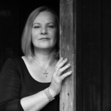Designing a website
Martin Willoughby – a superhero who was once, allegedly, bitten by a radioactive newt – is my very first guest blogger as he entertains and enlightens us on the art of Designing a Website.
 Give me an F. Give me another F. Give me another F. What have you got? Three websites.
Give me an F. Give me another F. Give me another F. What have you got? Three websites.
One of the little known aspects of web design is the way people look at a site when they first come across it. They start at the top, read from left to right, look down the left hand column, then read across the centre of the page…like an F.
This probably has as much to do with the way sites were originally designed as with human nature, but when thinking about your own website it’s as good a place to start as any.
The part across the top of the page is the one that visitors will see first, so it has to make an impact and you have to decide what you want to tell them. For writers this is especially important as it will tell your visitors what kind of books you write and whether they will like them or you. Thriller writers tend to stick to dark colours, romance to pastel colours etc. The lighter your books, the lighter your colouring.
Which font you use across the top will also give a clue to your visitors about your writing and you, though don’t try and over think it. Go with your gut instinct, the same one that helped you write your books, but make sure the words can be easily read.
(A word of warning about using fonts elsewhere on the page. Stick to one, simple, easy to read font or you will confuse the visitor and make the page difficult to, build, download and view)
Down the left hand side you will probably want to put special offers, links for Amazon or bookstores, a short biography. Something that will change over time. Across the middle of the page will be some other important information, such as your latest book release and events linked to it.
Take a look at the blogs you follow and sites you visit. Which ones jar with you and which are easy on the eye? Which ones suit the author/blogger and which ones don’t? Why?
One example of a good website is the BBC iplayer homepage. [http://www.bbc.co.uk/iplayer/] They’ve played with the F design a little by having two strokes across the top (the links at the top and the ‘featured’ items below), but under that you will find a list of channels on the left hand side and the rest of the information to the right in blocks.
Amazon [http://www.amazon.co.uk/] are another case in point here, but they have a thin line at the top, a thin list at the side and then get to the rest of the information on the page around these details.
Of course, a lot of websites break this rule, but only to an extent. They could have multiple left to right lines, such as the BBC Radio 4 webpage [http://www.bbc.co.uk/radio4/], or work in blocks, like Wikipedia [http://en.wikipedia.org/wiki/Main_Page], but they all remember that people read left to right.
So when you think about your website, keep anything REALLY important on the left hand side, as that’s where your readers are going to look first, and choose your colours and title font carefully.
Other than that, let your creative juices flow.
Martin is a part-time author, full time father and PC security specialist with a love of gadgets he wishes he could afford. He writes SF & SF Comedy, has two books on Amazon (one under the pen name of Willaby) and is a co-founder of the Starfish Publishing Co-Operative (www.starfishpc.co.uk).



